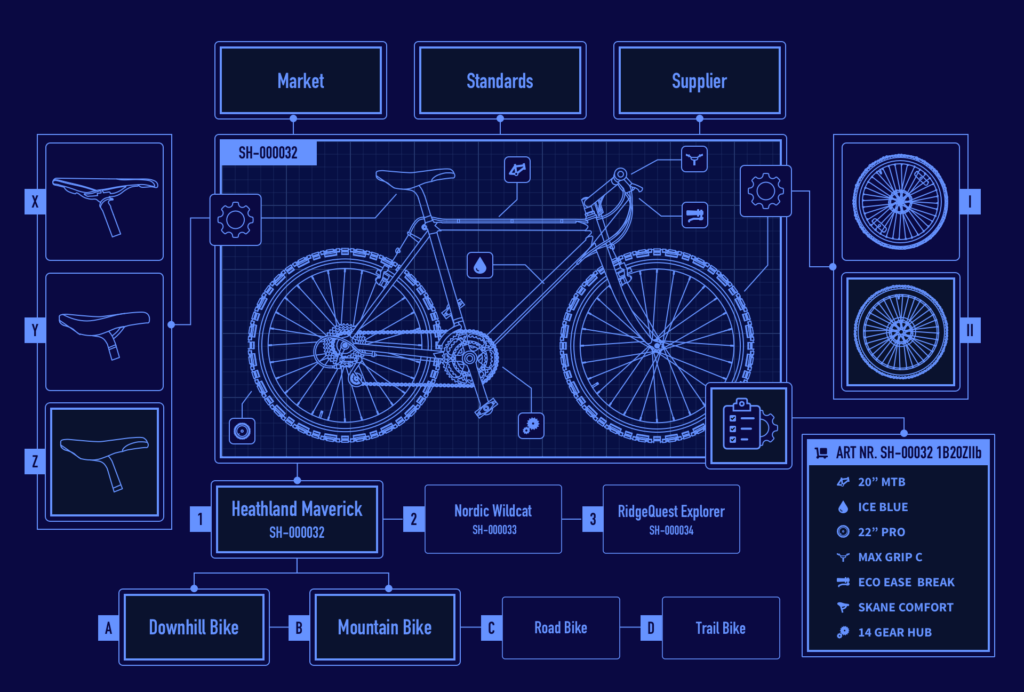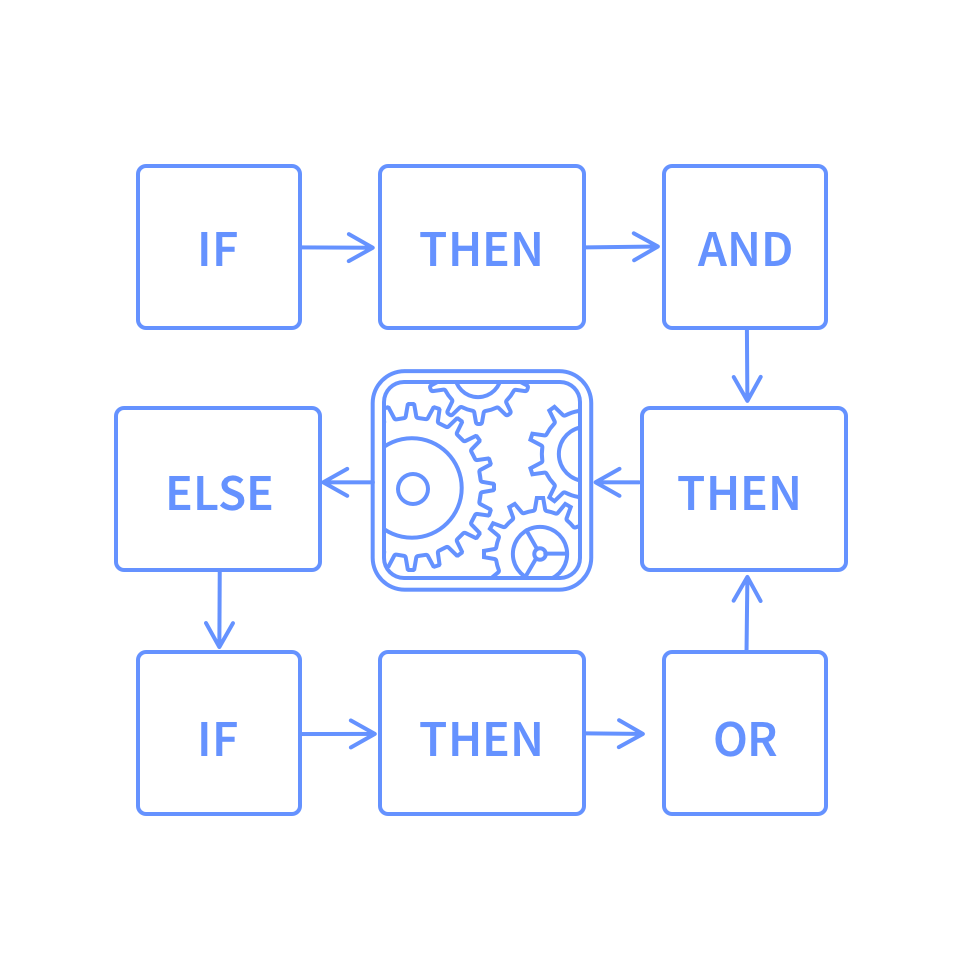The Game Changing Technology
To effectively manage a high level of variance across multiple domains, it’s crucial to express complex relationships and effectively handle abstract concepts at the appropriate level: Minimizing duplicated relationships to maintain.
The next-generation configuration capability is about being able to describe all complex multi-domain relationships where they truly belong – so that they can support reuse and scalability throughout the lifecycle of the product, and the related services.
inorigo®’s metagraph technology enables multi-dimensional configuration across various product disciplines, services, and related entities. These abstractions help minimize the number of configuration rules, making them easier to understand, reuse, and maintain.
Managing Product Variants
Product variants are unique combinations of selected product characteristics covering both functional and physical features. Traditionally, product configuration has been about managing the variability of physical parts through a hierarchical structure, often referred to as 150% Bill of Materials (BOMs).
However, in today’s business landscape, with increasing complexity including ever-growing electronics, software, and servitization, a different approach configuration must be employed.
inorigo®’s metagraph technology enables multi-dimensional configuration across various product disciplines, services, and related entities. These abstractions help minimize the number of configuration rules, making them easier to understand, reuse, and maintain.
The Escalating Challenge of Configuration
There is a significant gap to fill between existing technology based on Bill-of Materials, referred to as 150% BOMs, where all possible variations need to be defined in advance, and next generation of dependency-rule defined configuration solutions where it is impossible to define all possible variations in advance.
The ever-increasing integration of electronic and software components within mechanical products, combined with emerging business service models, introduces entirely new demands on how to manage variability.

Exemplified the Automotive Industry, which, through its software-defined vehicles, now sees software as the foundation for modularization and configuration. Addressing the infinite variance demands not only a shift in thinking – but also entirely new solutions.
In addition, we face a need for constant reconfiguration of individual products (Digital Twins) throughout their lifecycle. Attempting to come up with a variant in advance for each potential future configuration of software, electronics, hardware, and service packaging for each individual product only makes the task even more daunting.
The Lack of Ability to Deliver Functional Solutions
The major suppliers of PLM platforms are attempting to address the issue by being able to link an increasing number of domains of information to their hierarchical variant structure and configuration solution.
Unfortunately, attempting to cram ever-more variant-driven features, such as requirements, functions, and software parameter settings into the same solution that previously struggled with configuring physical components, is unlikely to succeed.
Instead of providing their users with the opportunity to express true multi-dimensional dependencies at the abstraction level where they exist, they attempt to address the challenge using their old tools. This leaves users with unsynchronized entities and an unmanageable number of variants at the lowest level of specification.
MORE INITIATIVES
Through comprehensive data integration, enhanced metadata management and improved data quality inorigo® reinvents Data Governance. Secure data sharing is facilitated, promoting transparency and accountability.
inorigo® connects master-data, reference-data and meta-data into a dynamic Meta-context, distributing the data governance and ownership to business. It allows for managing new relations cross domain with speed and precision, automated where appropriate.
